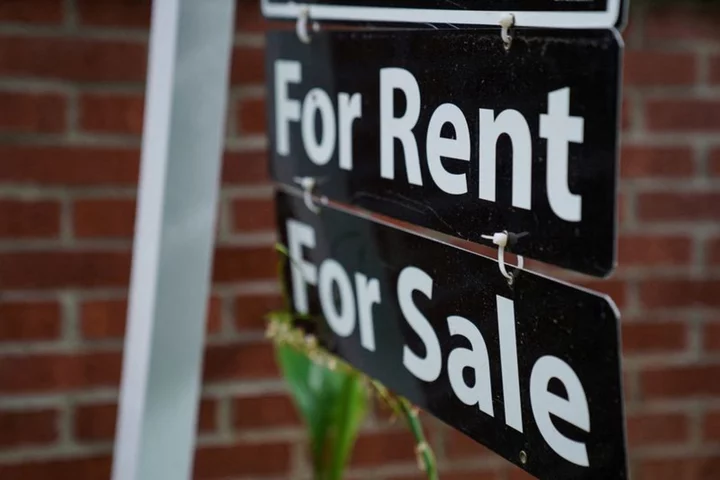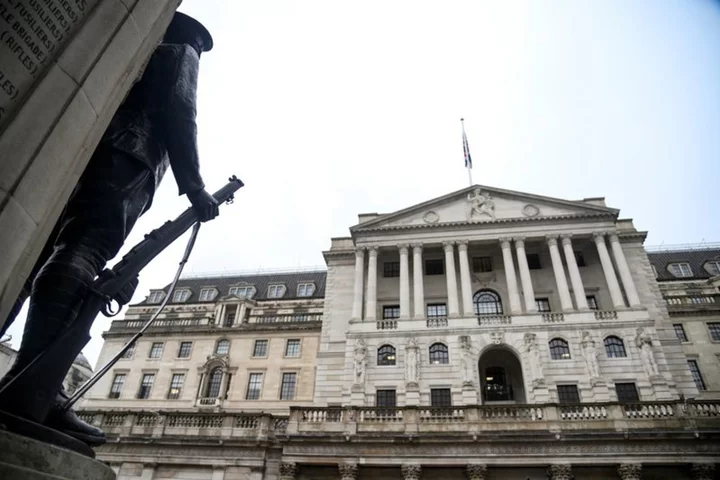By Howard Schneider
WASHINGTON (Reuters) -Federal Reserve officials throughout this year had pinned their hopes for falling inflation in part on an expected easing of U.S. housing price increases that would flow from their sharp interest rate hikes, and the data had largely followed suit.
That changed in September when U.S. central bank officials themselves sensed that progress on housing inflation might have stalled. Data released on Thursday confirmed a jump in shelter prices that, for a month at least, bucked the trend.
Analysts don't expect it to continue, with real-time rent data still pointing to an eventual slowdown in official housing price indexes that include information from a year ago in a moving average.
But the shelter cost data was enough to slow progress on consumer price inflation for a month, and will need to move back in the other direction for Fed officials to stay comfortable in the likelihood of continued progress toward their 2% inflation goal. The rate of underlying, or "core," consumer price inflation, did slow on a year-on-year basis to 4.1% last month from 4.3% in August, but on a monthly basis the pace of shelter cost increases doubled, to 0.6% from 0.3% in August.
"The bigger picture is that the trend is still quite encouraging, but the fight continues," said Olu Sonola, head of U.S. regional economics for Fitch Ratings. "The uptick in housing inflation this month was the key surprise. Housing inflation will need to decline sharply over the coming months for us to see inflation near 2%."
The somewhat surprising resilience in the housing market, with home prices, housing permits, and construction employment proving less sensitive to interest rate increases than expected, has begun to be cited by Fed officials as a possible risk to their otherwise optimistic outlook that inflation will over time return to the central bank's target.
In the complicated dance of supply and demand in the U.S. housing market, where regional variations, the pipeline of construction, rents, single-family home prices, and interest rates all play a role in the monthly inflation number, the next moves aren't always clear.
"Activity in the housing sector has picked up somewhat," Fed Chair Jerome Powell said at a press conference after the end of the central bank's Sept. 19-20 policy meeting, though he said he was confident that newly signed apartment and home leases would include smaller price increases than the year before and eventually moderate the home price index overall.
In the minutes of that meeting, possible risks of a housing surge were part of the general discussion.
"Participants noted that housing demand was resilient despite higher interest rates; new home construction was solid, in part reflecting the limited inventory of homes available for sale," said the minutes, which were released on Wednesday.
'STRONG HOUSING MARKET'
Limited supply, perhaps because current homeowners are reluctant to move given the high mortgage rates they'd pay for a new home, is one possible reason home prices have been continuing to rise.
In the list of risks for inflation to remain elevated, Fed officials in September pointed to "the effects of a strong housing market."
Not since February has the shelter cost gain been higher than it was last month, and though the year-on-year increase continued to drop, housing accounted for half the overall monthly increase in prices in September.
While it is unlikely on its own to push the Fed back towards a rate increase at the Oct. 31-Nov. 1 meeting, it is one reason policymakers will likely keep their options open at that session - offering another reason to be skeptical inflation is yet on an assured path lower.
The jump in shelter costs kept services inflation overall on the high side, and "will keep the Fed hawkish and open to another rate hike," even if the central bank stays on hold in November, said Kathy Bostjancic, chief economist at Nationwide.
Investors largely maintained bets that the Fed will not increase the benchmark overnight interest rate at its next meeting, but slightly increased the odds of a hike at the Dec. 12-13 session.
Some analysts feel by then the shelter disinflation Powell and his colleagues have anticipated will be in full swing.
"The collapse in newly-signed rent inflation means those monthly gains will ease rapidly soon," said Andrew Hunter, deputy chief U.S. economist for Capital Economics, who noted that the Single-Family Rent Index maintained by CoreLogic has been falling fast and is regarded as a good leading indicator of the shelter portion of CPI.
While the data is lagged, "the likely direction of travel is pretty clear," Hunter said.
(Reporting by Howard Schneider; Editing by Paul Simao and Jonathan Oatis)









